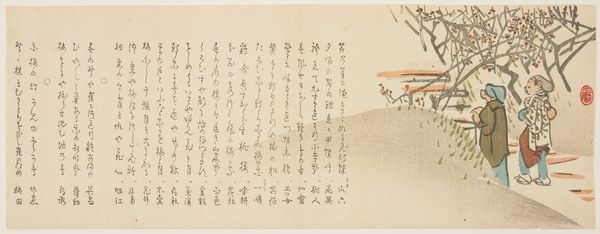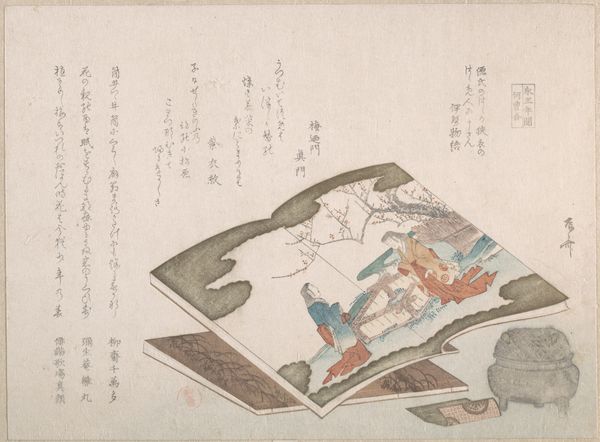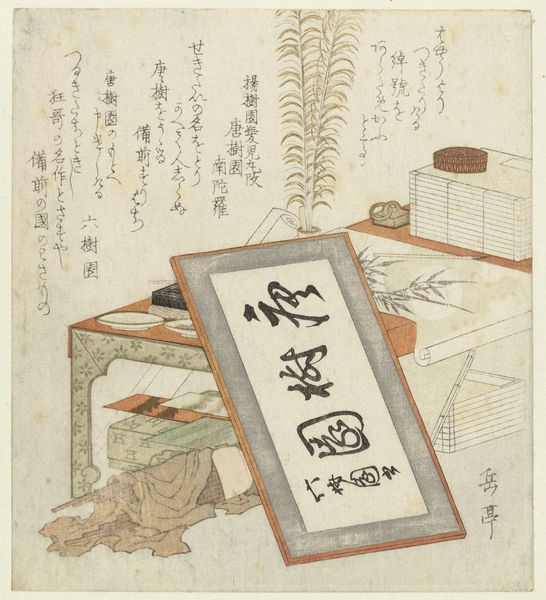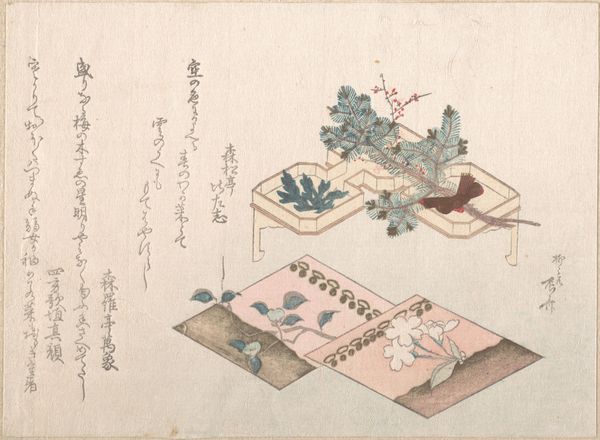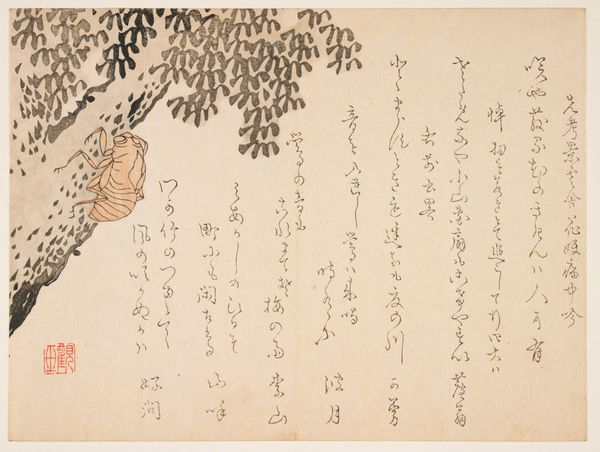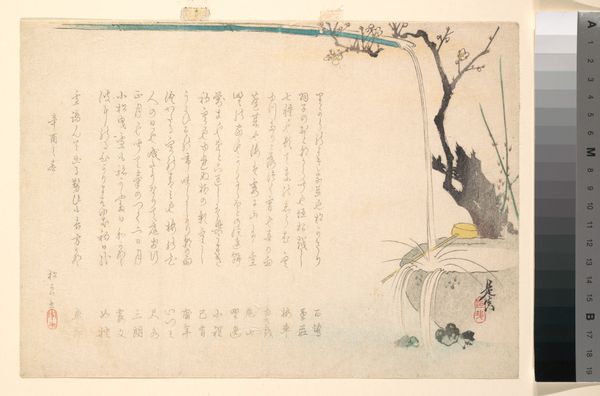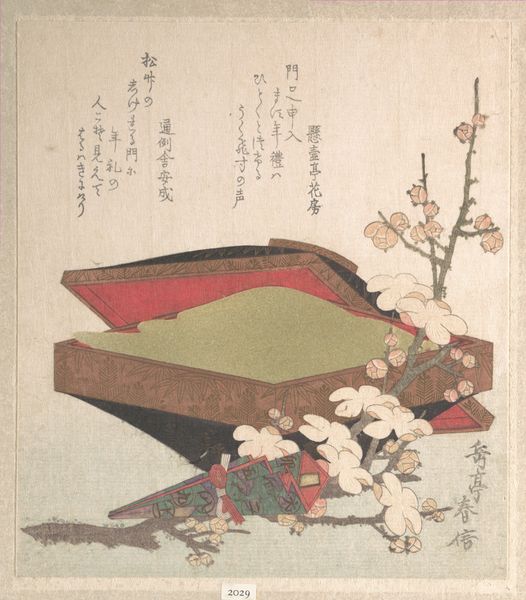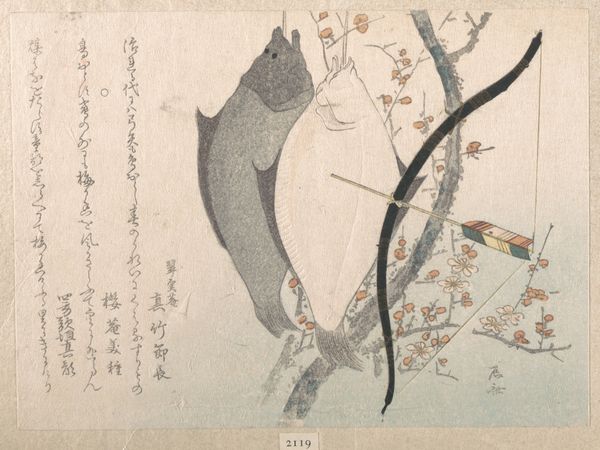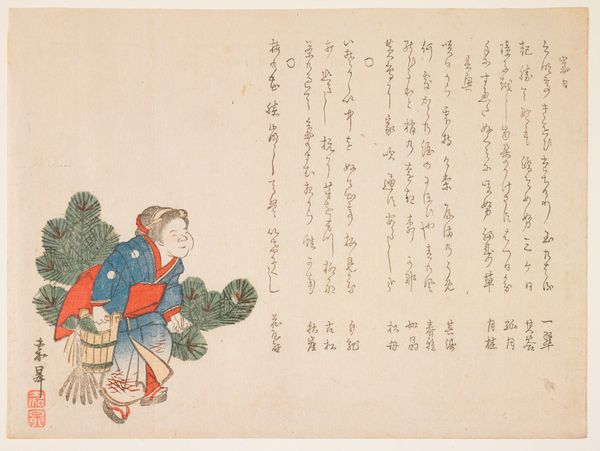
print, woodblock-print
#
portrait
#
narrative-art
# print
#
asian-art
#
ukiyo-e
#
figuration
#
woodblock-print
#
line
Dimensions: height 137 mm, width 175 mm
Copyright: Rijks Museum: Open Domain
Curator: Let's delve into Katsushika Hokusai's "Poet Reading a Poem," a woodblock print from around 1797, currently housed at the Rijksmuseum. The artwork falls into the category of Ukiyo-e, a style known for its depiction of scenes from everyday life. Editor: It feels intimate, almost like eavesdropping. The limited color palette creates this sense of quiet observation. What do you make of the figure’s pose, so intently focused on the scroll? Curator: Hokusai positions the male figure, presumably the poet, within a domestic setting. The poet's figure is positioned with subtle detail; one observes the traditional dress, the posture, and the setting suggesting an educated or literary class. The context in which this image has meaning is crucial in understanding its value. During this time period, artistic, literary, and intellectual salons shaped social culture, providing outlets to present philosophical thoughts regarding social structures. Editor: And the script filling up the left side… it’s visually arresting, though I can’t decipher it myself. It reminds me of those dreams where you're reading something, but the words never quite make sense. How do we interpret the use of text as image? Curator: The integration of text with visual elements invites consideration of textual interpretation within socio-cultural frameworks. This was part of the rich artistic movement in Japan, in which an artist can evoke a cultural reference and trigger conversations about literature, the production of writing, or how literacy contributes to social mobility. Editor: Looking at it, the scene comes across to me as incredibly still, almost suspended. There's an aura of intense internal activity but quiet external presentation. That splash of red with the branches on the top, brings a welcome vibrancy amidst this stillness. I think Hokusai wonderfully captures the duality of creative thought—that push and pull of action. Curator: I concur on the dual nature, although I understand this visual representation in the light of considering this type of work's influence on later modernist and postmodernist artistic concepts. Japonisme impacted conceptions of art history when seen in intersection with artistic works being produced by Europeans. We cannot deny, however, how deeply this artwork speaks to a universal audience in the twenty-first century. Editor: Right. Considering it all, it's impressive how Hokusai encapsulates, with the most modest strokes and shades, that moment of intense, personal exchange between a writer and his words.
Comments
No comments
Be the first to comment and join the conversation on the ultimate creative platform.

